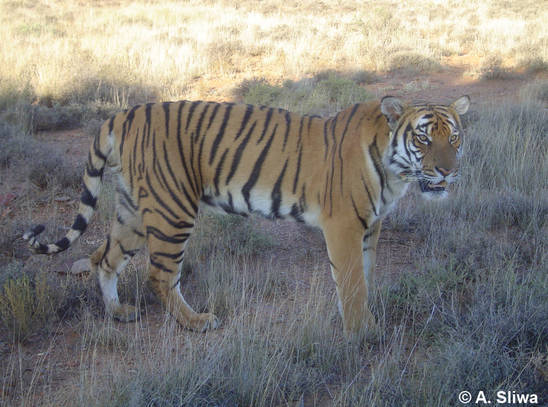Tiger
South China tiger (P. t. amoyensis)
According to the revised taxonomy of the Felidae, the tiger subspecies Panthera tigris amoyensis is included into the subspecies Panthera tigris tigris.
The former subspecies South China tiger was classified as Critically Endangered by the IUCN Red List and most probably extinct in the wild. As of 2011, 108 South China tigers were in managed captive breeding programs in China. It is the most controversial subspecies and was recognized as a subspecies only on the basis of a limited sample of 5 captive animals. The South China tiger was estimated to number 4,000 in the early 1950s, when it became the target of large-scale government anti-pest campaigns and suffered from habitat loss. The South China tiger came under special protection in the 1970s. In 1982 only 150-200 animals remained. Ten years later, tiger signs were found in 11 reserves in the mountains of Fujian, Hunan and Guangdong provinces. However, field surveys in eight protected areas in 2001 and 2002 revealed no signs of South China tigers and strongly indicated that there is no remaining viable tiger population. Moreover, prey densities were low, and habitat degradation high. Effects of uncontrolled hunting were compounded by extensive deforestation and probable reduction in available prey, large-scale relocations of urban populations to rural locations leading to fragmentation of tiger populations and increased vulnerability. The Government of China has declared the goal to reintroduce South China Tigers into the wild. Nevertheless, there are several constraints such as the lack of genetic diversity and purity, lack of suitable habitat and wild prey base as well as the small size of possible reintroduction areas. Moreover, the captive South China Tigers descended from six individuals and show signs of inbreeding.


